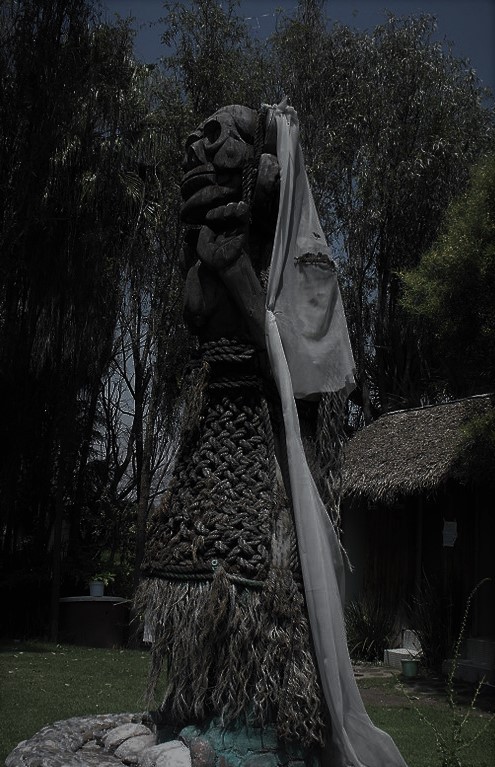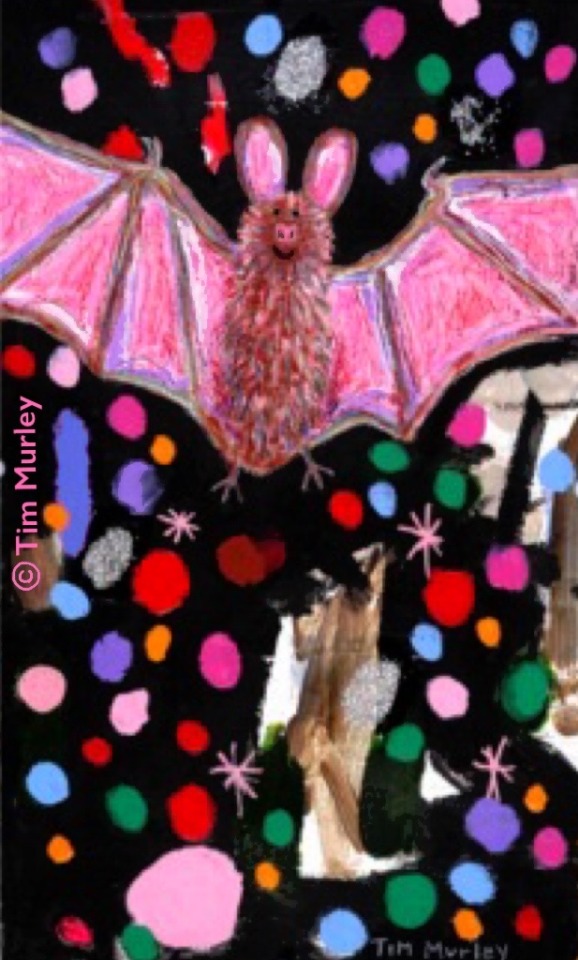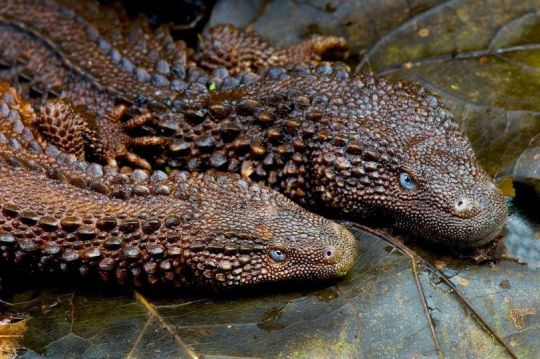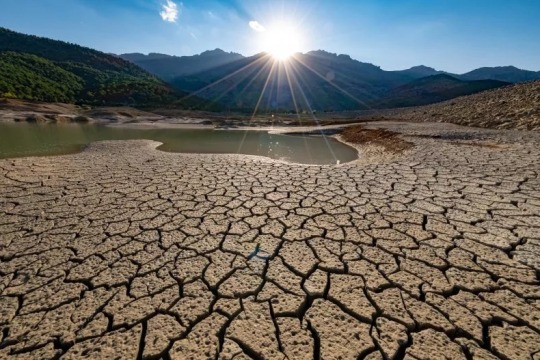#they are white in south america but not in north america
Explore tagged Tumblr posts
Text
People looking up "40 acres and a mule" after the Superbowl makes me happy but sad at the same time, bc damn we didn't even know that 😅😭 but yeah the released Southern Black people were supposed to receive those things post slavery.
Instead, they got pushed into sharecropperdom (which is just another form of legalized slavery, tbh) because no white person in power was going to enforce that. Especially post Lincoln. Reconstruction was a joke. Just bc the North wasn't pushing for slavery doesn't mean they gave a shit about Black people either, btw 😅 it's very much a modern day liberal's "I 'care' about them but I don't want to see them in my space" mentality.
Anyway, many south plantation owners also ended up getting condolence money for the loss of their profit generators. I.e. slaves. And the ability to gather generational wealth has been actively and violently fought against Black people in America since! There's a reason why we yell about reparations- the bill has been long past due! And if you're not gonna fix shit else or fight for a better system, then at least pay what you owe!
68 notes
·
View notes
Text
Soul Food: A Black American Cuisine
Baked macaroni and cheese, candied yams, collard greens, smothered chicken, fried chicken, fried fish, oxtails, ham hocks, okra, jambalaya, dirty rice, gumbo, cornbread, shrimp and grits etc... the possibilities are endless when it comes to down this ethnic cuisine.
Originating in the American South amongst enslaved Africans this cuisine combines West African, Central African, Western European, and Indigenous cuisine of the Americas. Having to survive off of inadequate provisions and trying to preserve their traditional recipes, enslaved peoples laid the groundwork for soul food. "Soul" is used to describe African-American culture and its' people as a whole, the term gained popularity in the 1960s. Initially soul food was looked down upon and wasn't respected in the North amongst other Black communities it garnered attention due to the Great Migration and has since become a staple in most households. From Sunday church gatherings to backyard barbecues (cookouts) to dinner tables to restaurant menus, this cuisine has become a symbol of cultural pride and perseverance.
Truly food from the soul.

Cornbread, greens, mac and cheese, yams and fried chicken.
Soul food is closely associated with the Southern cuisine of the United States. There are a few different versions of soul food, you can have it Creole, Cajun or Gullah style; just like most dishes it depends on the region.


Jambalaya and Louisiana seafood gumbo

Spaghetti and catfish
"Soul food historian Adrian Miller said the difference between soul food and Southern food is that soul food is intensely seasoned and uses a variety of meats to add flavor to food and adds a variety of spicy and savory sauces. These spicy and savory sauces add robust flavor. This method of preparation was influenced by West African cuisine where West Africans create sauces to add flavor and spice to their food. Black Americans also add sugar to make cornbread, while "white southerners say when you put sugar in corn bread, it becomes cake"[9]. European immigrants seasoned and flavored their food using salt, pepper, and spices. African Americans add more spices, and hot and sweet sauces to increase the spiciness, or heat of their food.[10] Bob Jeffries, the author of Soul Food Cookbook, said the difference between soul food and Southern food is: "While all soul food is Southern food, not all Southern food is soul. Soul food cooking is an example of how really good Southern [African-American] cooks cooked with what they had available to them."[11] - Sourced from Wikipedia
June is National Soul Food Month.
Red Drink aka Liquid Soul


Red drink is derived from West Africa's hibiscus tea called bissap. The plant's flower petals are brewed resulting in a cranberry-red to magenta-purple color, depending upon dried or fresh petals being used. Kola is another one that's brewed using kola nuts. Bissap and red kola nut brew are hospitality drinks that can still be found in West Africa to this day. Jamaicans also have a similar drink called sorrel.
Like with soul food African-Americans created an adaption from their homeland's drink. Red lemonade was popular in the 1870s-1880s, coloring the beverage with fruits like cherries and strawberries; then red soda in the 1890s and finally powdered drinks such as Poly Pop and Kool-Aid in the 1920s. Just like bissap or red kola nut brew, liquid soul is our hospitality drink. Whenever there's a gathering you can almost bet this beverage will be there. It doesn't matter the flavors or drink type just as long as it's red.
"What exactly do I mean by “red drink?” Well, in soul-food culture, red is not just a color, it’s also a flavor. We soul-food aficionados don’t get caught up in describing a drink as “cherry,” “strawberry,” or “tropical punch,” and we don’t say it has “hints of cranberry.” It’s just “red.” Red drinks have such a special cultural resonance that whenever African Americans gather together, there’s usually a red drink in the mix. In short, it’s liquid soul." -Soul Food Scholar, Adrian Miller
Writing this piece has been enlightening and entertaining; my goal is to showcase our ethnic cuisine and give some history behind it for a better understanding for Black History Month. There is so much more to soul food history that I would be here all day if I wrote it out. I also love to find similarities among the diaspora. Our jambalaya rice is similar to West Africa's jollof rice, our gumbo is similar to West Africa's okra soup. Red drink is also referred to as "red drank" in some areas, here in Detroit we prefer Faygo red sodas (pop), but in the South they prefer Big Red. "Red, in many West African cultures, is a symbol of strength, spirituality, and life and death, according to historians."
I would like everyone to list their favorite cultural meal in the comments below and their favorite drink along with it. Thanks for reading!
Source 1. Source 2. Source 3. Source 4. Source 5.
#black tumblr#theafroamericaine#black culture#black art#black women#black girls of tumblr#black history#nostalgia#soul food#food history#american history#culture#black history month#African American#black pride#black excellence#black community#pan africanism#african#african history
31 notes
·
View notes
Text
I suspect this also is a function of geography and regionalism as well. A lot of the pedantic debates online boil down to people forgetting they're talking to people in other cities, states, or entire countries. Race is a construct, and when it comes to constructs, context matters. I live in the American southwest, and around here "white Hispanic" people are mostly a subset of white people...but you only have to go like a couple states over and they are a subset of Hispanic or Latino people. They "lose" their whiteness as they move north or east. (You can also see a bit of this with the debates over Obama and Kamala, both of whom are typically described as black but both of whom only have one black parent; they both have another parent who has no African heritage and yet their blackness supercedes everything else, in large part because of their context.) I live in an area which has a massive Jewish population but one which is subdivided based on race -- and ironically, I saw quite a bit of conflicts between these two groups in high school and parts of college because of this. There were Jews of European descent whose families have been here for 3+ generations, and there were Jews of Iranian descent whose families have mostly been for 1-2 generations, overwhelmingly those whose families came here in the 1970s or after. Pretty much everyone agreed the first group was white, but there was a lot of disagreement among and about the second group. Some would say they were racially Middle Eastern because they were from Iran (though they preferred to refer to themselves as Persian to separate themselves from the current regime). Others, however, insisted they should count themselves as white...specifically because they were Jewish. White Christians were not a majority around here. When they wanted to expand their influence without giving up power, their options are to get closer to non-white Christians or get closer to white non-Christians -- and in this half of the city, they chose the latter. Go a state or two over, and it's the other way around. "We're Jewish, and Jews are white here" is an argument I've had said to me -- coming from someone trying to differentiate themselves *from me*. I am Indian, and in the U.S. a lot of people overtly or subconsciously lump together South Asians and Middle Easterners. I am of Hindu background and my family immigrated here from India, so I would and could never be taken as white. But because these classmates who looked quite a bit like me were Jewish, they could obtain a provisional proximity to whiteness that I could not. Proximity =/= belonging, though. Whiteness is still largely being defined by how close to a WASP you appear, not by anything you actually are.
tbh pre Oct.7 I would have responded to the “are there white Jews” question with “its complicated” but now my answer is just simply “no”
#ethnography#geography#human geography#sorta#religion#race#racism#colonialism#because that's also a huge component#i know so many people who say#they are white in south america but not in north america#meanwhile there are so many europeans who refer to other europeans as not white or some kind of lesser white#what do you mean italians or greeks aren't white#ya'll look the same to my asian-american ass
1K notes
·
View notes
Text
A country built from colonialism has no fucking business complaining about fucking immigration.
#us politics#white supremecy#fuck white supremacy#native american#indigenous peoples#colonialism#fuck colonialism#you built your country on someone else’s homeland and you have the audacity to say other people are stealing your country?#get the fuck out#also goes for Canada Australia and New Zealand#america#americas#North America#South America#if you don’t like “people coming into your country then go back to where YOU came from#because it wasn’t here
9 notes
·
View notes
Text
References For Artists/Researchers
If you are an artist or just interested in indigenous art/material culture of North America in general I HIGHLY recommend utilizing the Smithsonian Archive.
If you have any experience doing cursory research on Indigenous North American material culture you'll know that it can be hard to both find good photos and ascertain where they came from/avoid misinformation; This archive is organized as such that you can search by region/specific tribe/object type/etc. It is very useful for getting detailed references in my experience.



If you're an artist like me using this for drawing reference and aren't familiar with the culture you're drawing I strongly recommend that in addition to these references you look for indigenous sources; This is a good repository for photo references, yes, but it's not going to tell you, say, how something was actually worn or used, and without further research it's not going to be very meaningfully helpful.
Some tribes/nations have their own websites with resources for culture/clothing/etc! Personally I recommend getting familiar with these sources and then afterwards using the Smithsonian Archive for specific references once you know what it is you'll actually be drawing.
For reading references I suggest looking through the Smithsonian's records of titles and then looking them up on the Internet Archive, as a lot of them you wont be able to read through the museum's website.
#this archive covers North and Central America only - not South America#references#references for artists#I'm a white guy from the US - so like keep in mind that I'm not an expert lol#I just thought I'd share what I've found useful#links
72 notes
·
View notes
Text

"A grocery window." Sacks of flour in the window of the Golden Rule Store in Mebane, North Carolina. Photographed by Dorothea Lange, 1939. From The New York Public Library.
#mebane#north carolina#Alamance County#dorothea lange#photography#historical photography#1930s#1935#20th century#historical#the south#black and white#golden rule store#the new york public library#small town america
11 notes
·
View notes
Text
did i just see someone hc South Korea to be the child of North Korea and America post-WWII

#why this fandom has a particular obsession with making alfred the (good) dad of his colonial and imperial possessions (like liberia)#is smth i'll never understand#hws america#hws north korea#// disk horse#hetalia#hws south korea#LIKE THERE'S SO MUCH I COULD WRITE ABOUT THIS HOW IT PLAYS INTO NARRATIVES OF WHITE SAVIORISM AND THE IMAGERY OF AMERICA NEEDING TO “GUIDE”#THE “YOUNGER” “LESSER” NATIONS OF THE WORLD WHO ARE SO OFTEN CONVENIENTLY POC HMMMM AND BASICALLY DOES A MISS SAIGON RETELLING AS WELL#THE BELIEF THAT TODAYS SK HAS NO HISTORY OR CULTURE W/O THAT AMERICAN INTERVENTION AND OTHER COUNTRIES ARE ALLOWED TO MODERNIZE AND REMAIN#LIKE IT'S NOT CUTE?? ITS NOT ADORABLE OR FLUFFY THAT IS LITERALLY PRO-AMERICAN IMPERIALIST PROPGANDA#also nk being a shitty mom who's paranoid of sk replacing her is 1) the demonization of asian moms as irrational and inhumane and in need#of white intervention and 2) justification of the usa's shitty alienation of nk as a pariah state#he's a different oriental but edward said is rolling in his grave rn
142 notes
·
View notes
Text
remember when archie sonic made the echidnas british colonizers and not only were n*zi echidnas introduced but the guys they were actively being racist against (the dingoes) were portrayed as pissy bad guys, "appropriated" the echidna's technology (despite the echidnas themselves appropriated their land) because they "couldn't create technology of their own" and also more n*zi caricatures too
and then the spirit of one of their colonizers banished them to desert superhell
#literally everytime they dealt with native cultures the archie writers fucked up SO BAD#like the cat country with a modern portuguese name stereotypically mesoamerican aesthetics and an egyptian queen#OR THE FACT THAT THEY MOVED THE WOLF PACK#WHO WERE CLEARLY MEANT TO BE NORTH AMERICAN NATIVES#TO SOUTH AMERICA#BEVAUSE AMERICAN NATIVES ARE ALL THE SAME FUCKING THING APPARENTLY#and when they showed pachacamac it was soooo clear that he was redesigned by white people#that wasnt pachacamac that was patchacamack#or when they made the journey to the west adaptation#and thought it would be a good fucking idea to mix chinese and japanese cultures as the same fucking thing#i like pre sgw archie but those kinds of things make it SO HARD to stomach it through...#sth#archie sonic#in this house we hate ken penders#text post
25 notes
·
View notes
Text
genshin making characters based on aztec and yoruba gods white as a lily is genuinely vile btw
#natlan is based on the indigenous americas and west africa btw#natlan is gonna suck so bad#i mean i knew it was#when sumeru came out it was a nightmare#it’s a region that’s supposed to be based on south asia and north africa#every single character in the south asian section was white#and in the north african there were only three playables that weren’t white and they were debuffed#and they’re barely dark. all super ashy#most of the npcs in that area are white#but ALL the enemies in the NA religion are like dark skinned#it’s literally racism#AND colorism
5 notes
·
View notes
Text

Snowy Egret🪽
#snowy egret#egret#south louisiana#louisiana#nikon d7100#nikon#nature#birdoftheday#birds of north america#water bird#birdlovers#bird watching#bird photography#birds#green#white#green aesthetic#wildlife photography#wildlife#wild animals#sub tropical#tropical#waterfowl
6 notes
·
View notes
Text
La Llorona the Mexican Weeping Woman Ghost
La Llorona is a famous Mexican folk tale. It align itself with other similar legend of the scorned woman, the woman in white and the weeping woman. Read about it at #moonmausoleum🦇🖤 #Paranormal #ghosts #Haunted
Along the rivers in Mexico a wailing woman wearing white can be seen and heard as she comes up drenched from the waters. She is desperately looking for her children she herself drowned. And according to the legends of La Llorona or the wailing woman, you are next. “The scariest part was not that La Llorona was a monster, or that she came when you called her name three times in the dark, or that…

View On WordPress
#1600#article#children#drown#featured#Ghost#haunted#haunting#la llorona#mexico#murder#North America#south america#vengeful spirit#wailing woman#weeping woman#woman in white
7 notes
·
View notes
Text

Bubblegum bat. 🟣🔴🦇🟠(Mixed media on paper)🍬
#bat#bats#bats of south america#bats of north america#fruit bats#bats of europe#cute bats#i love bats#mexican free tailed bat#vampire bat#cotton balls#bubblegum#childrens book illustration#picture book illustration#cute art#fledermaus#murciélago#murcielago#white nose syndrome#bat cave#flying fox#flying foxes#pop art#naive art#outsider art#collage art#collage artist#collage artwork#kids room decorations#kids room decor
7 notes
·
View notes
Note
Any unusual or downright weird lizards I can obsess over for a bit?
I think I have 5 weird (cool) lizards for you...


Mexican Mole Lizard (Bipes biporus), family Bipedidae, endemic to the Baja California peninsula of Mexico
photographs by Mike Pingleton & Carl J Franklin


Earless Monitor Lizard (Lanthanotus borneensis), family Lanthanotidae, endemic to Borneo
ENDANGERED.
Semi-aquatic.
Closely related to the true monitor lizard in the family Varanidae.
The only member of its family.
They do have inner ears, and are capable of hearing, despite the lack of ear openings and tympana.
photographs by Chien C. Lee & Reptiles4all


Red Worm Lizard aka White-bellied Worm Lizard (Amphisbaena alba), family Amphisbaenidae, foun din much of South America
photographs by Diogo B. Provete & Jose Gabriel Wildlife

Secret Toadhead Agama (Phrynocephalus mystaceus), defensive display, family Agamidae, found in found in Iran, North Afghanistan, Eastern Caucasus, Kazakhstan, Uzbekistan
photograph by Milan Zygmunt Photographer

Mossy Leaf-tailed Gecko (Uroplatus sikorae), family Gekkonidae, Madagascar
photograph by Inglourious Reptiles
1K notes
·
View notes
Text

A file photo shows ground parched by drought. The climate is changing in the U.S. Huseyin Bostanci/Getty Images
Sudden Shifts From Drought to Floods Are Getting More Common in the U.S.
— By Robyn White | August 31, 2023
Sudden shifts from drought conditions to heavy floods are becoming more common in the U.S. as the climate changes, a study has found.
The findings were presented in a study published in Communications Earth & Environment. Researchers from the University of Texas, the Hong Kong Polytechnic University Research Institute for Land and Space, and Columbia University's Department of Earth and Environmental Engineering, also found that so-called feedback loops—a process that can either increase or decrease the effects of greenhouse gases—are likely contributing.
"We are especially concerned with the sudden shift from drought to flood," co-author Zong-Liang Yang, a professor at The University of Texas at Austin Jackson School of Geosciences, said in a statement on the findings. "Society usually has difficulty responding to one kind of natural disaster like drought, but now you suddenly have floods too. And this has been happening in many places."
The findings were reached based on four decades of meteorological and hydrological data from hotspots around the world, including eastern North America, Europe, East Asia, Southeast Asia, southern Australia, southern Africa and southern South America, according to the statement.
Over time, from 1980 to 2020, researchers found that such whiplash trends in the weather increased approximately a quarter of a percent to 1% per year. These extreme shifts in weather patterns have manifested in parts of the U.S. recently, and in California in particular.
The state, which has been suffering from extreme drought conditions in recent years, was battered with record amounts of rainfall from December 2022 until early spring this year. The storms were so severe that catastrophic flooding was seen in many places.
While many thought that the increase in wet weather may help ease the drought, experts have warned that it will only be a short-term solution. As the drought in the western U.S. has stretched on for so long, it will still take years of above average rainfall for the region to fully recover.
Other factors as well as climate change may be contributing to these sudden weather changes, including the El Niño and La Niña climate patterns.
Feedback loops can also be to blame. Researchers found that during periods of heavy drought in humid areas, precipitation is pushed into the air, providing an additional moisture source, the study reported. This can then cause heavy rainfall.
Periods of drought in arid regions, can also see hot weather and low pressure colliding together, drawing moisture from other sources, such as the ocean.
"Climate change is fueling back-to-back droughts and floods which have caused widespread devastation, resulting in loss of life and damage to property, infrastructure, and the environment," said co-author Shuo Wang, an associate professor at The Hong Kong Polytechnic University. "Our findings provide insights into the development of early warning systems for mitigating the impacts of rapid dry-wet transitions."
#Tech & Science#Drought#Sudden Shift#Floods#Robyn White#Climate Changes#Communications Earth & Environment#University of Texas | Hong Kong Polytechnic University | Columbia University#Zong-Liang Yang | Professor | The University of Texas at Austin | Jackson School of Geosciences#Eastern North America | Southern South America#Europe | East Asia | Southeast Asia | Southern Australia | Southern Africa#California#Storms ☔️ | Catastrophic Flooding#El Niño | La Niña#Shuo Wang | Associate Professor | The Hong Kong Polytechnic University#Early Warning Systems#Dry-Wet Transitions
0 notes
Text
I think it's very revealing that Apartheid South Africa's great project, their ultimate solution to the problems of Apartheid, was the Bantustan Policy. Because by giving the black population their own "Independent Homelands", the South African settlers were trying to establish the same relationship with Africans that the USA has with Latin America and Western Europe has with North Africa and West Asia. It was a plan to eliminate the problems of second class citizenship by removing their citizenship altogether, turning "black" labour into "migrant" labour.
Like South Africa already used an extensive amount of actual migrant labour from neighbouring colonies and nations, but the bedrock of South Africa's economy was cheap heavily exploited local labour; the maintenance of this relationship was the primary reason Apartheid as a system even emerged in the first place. As Apartheid began to crack apart from both internal and external pressure, attempts were made to change the system while still maintaining the fundamental basis of exploitation. And migrant workers from impoverished colonised nations can be every bit as exploitable, but without all the unpleasant international backlash. So they attempted to shift the policy of separation within a nation to separation between nations. It wasn't enough to save open White supremacy in South Africa, but it's still working very well for the nations who inspired it
Apartheid and Segregation are tremendous evils in the eyes of all but the most reactionary Liberals, but "Border Control" is perfectly acceptable. All the same atrocities could be committed, all the same wealth stolen from exploited lands and exploited peoples, but in a much more internationally "normal" manner. As far as most Liberals are concerned "Citizens" have rights that should never be violated but "Foreigners" are lucky to get privileges, even when the only difference between the two are a few lines they drew onto a map. Oppression is good as long as its sufficiently externalised, happening in the places and to the people that you're not meant to care about. The same systems behind Apartheid are still very much alive all over the world, just under more "acceptable" pretenses. A simple change of aesthetic is all your average liberal needs to be comfortable
1K notes
·
View notes
Text
ran out of tags. a lot on my mind.
jjk american au -
yuuji would be puerto rican on his mom's side, 1/4 black on his dad's side from his grandpa. not much connection to his boricua heritage but still proud of it and wanting to reconnect and claim it by the time he's a teenager. his name would be a combination of his parents names: Kari + Eugene = Jikari. but after his mom left and his dad died, his grandpa raised him and just called him Euji after his dad. He got the nickname Ji/G in middle school, and a lot of times his friends would call out to him "Yooo, G!!" as a running bit. He's from KC, grew up east of troost.
nobara would be from one of the tiny ass towns in rural Oklahoma Northeast of Tulsa and Muskogee. She's Cherokee through her mom and grandma's side, and has tribal citizenship. her dad's white, but she doesn't know anything else about him and he has never been in her life. Her mom named her Briar Rose after sleeping beauty, but she only goes by Rose because she thinks it's a stupid name. Her grandma has some cultural knowledge that she tried to pass down to her daughter, and then to Nobara who took to it a little better.
megumi would grow up in the southside suburbs of chicago. he's second generation white hispanic on his dad's side and ??? on his mom's. his name would be natalia. toji's family is mostly still in mexico where they are truly filty rich. tsumiki is half-filipino on her mom's side. her name would be... idk probably jasmine or something. megumi grew up truly bilingual as his dad speaks primarily Spanish, but even without him around, the people in his building spoke either spanish or english, so he grew up speaking a mix. tsumiki struggles more with spanish because she didn't grow up with it from a young age.
they'd all end up at the same specialty school in chicago proper. nobara wanted to leave and move to a city so applied, yuuji got recruited, and megumi was in a development program since elementary school.
#did this last night when i couldn't find anything to be happy about#i guess i don't expect anyone else to get it#but it brought me joy#i really love it actually#america is actually really cool when you dive in deep#when you unrwrap the specifics of the millions and millions of people living here#i was researching kc slang and demographics of chicago neighborhoods#and cherokee nation and what it's like to live in ne oklahoma#when you take a microscope to this stuff you find there's people everywhere#and it's all a bit familiar#and it's all a bit novel#i know these people#but there's always more to know#there's always more to understand#like tsumiki's mom is probably from the north side#toji doesn't have to live on the south side but i think he does#i want to look more into the neighborhoods east of troost#i wanna figure out what school yuuji went to#i was thinking about how much code switching he would do when he was around his new friends#and when he would switch back and what would slip through#and would nobara really choose to go to chicago over new york or la#or would she want to go somewhere in texas or even okc?#and would yuuji be a royals fan?? would megumi be a white sox fan?#i should think of a better name for tsumiki than jasmine#but i wonder if anyone would look into why i chose natalia for megumi and would they understand#and is that really how jarring his name is? imagining meeting a boy named Natalia#and would his friends call him nat? would he go by nate?? would his name be a big secret or super embarrassing when a new teacher calls roll#and thinking up yuuji's name was so much fun#i love how black ppl create names i had soooo many names ive never heard before but which i could recognize as something we would do#im still not totally satisfied with the one i picked lol
31 notes
·
View notes